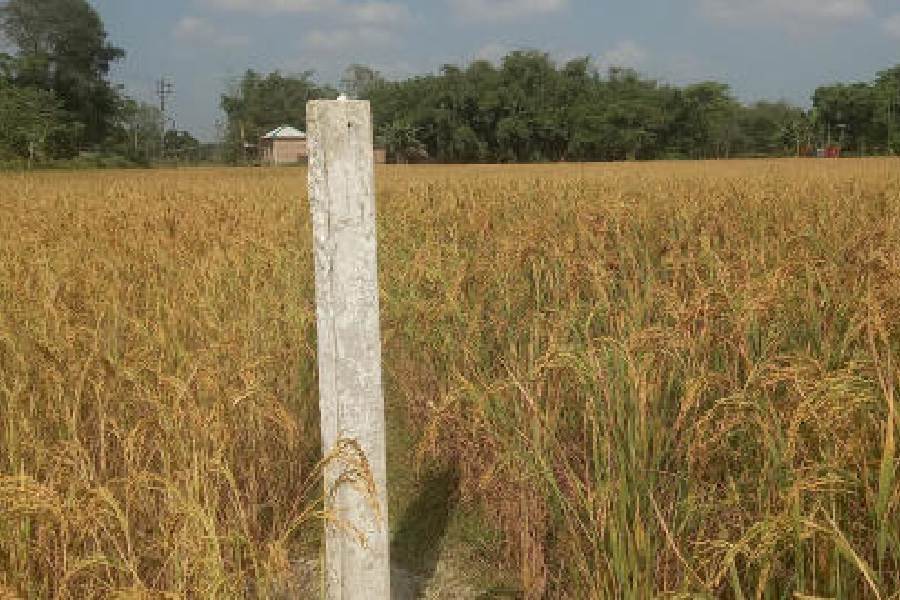The Jalpaiguri district administration has started installing pillars along an unfenced stretch of the India-Bangladesh border in association with the Border Security Force (BSF) in the Sadar block of the district, much to the relief of residents in four border hamlets.
Since 1947, the villages — Naotari-Debottur, Boroshoshi, Kajaldighi and Chilahati — were within Indian territory but figured in the map of then East Pakistan, and after that, Bangladesh.
In 2015, as India and Bangladesh inked the land boundary agreement, necessary rectification was done, and the villages were formally included in the Indian map.
However, the international border along a stretch of 16km remained unfenced.
There were no border pillars as well.
“We have been living along the unfenced stretch and were always perturbed over our security as anybody from Bangladesh could enter our area any time. However, our concerns grew after the downfall of the Sheikh Hasina government earlier this year,” said Palendranath Roy, a resident of Foudarpara, a locality in Boroshoshi village.
After Hasina left Bangladesh, the villagers saw hundreds of Bangladeshis, mostly Hindus, seeking refuge.
“Several of them assembled and insisted that they should be allowed to enter India as they were feeling insecure in Bangladesh. We were perplexed. Eventually, the BSF handled the situation and persuaded them to return to their homes,” said Shashikanta Roy, another villager.
This prompted the villagers to demand immediate demarcation of the border with fences and a border road for their movement and the BSF’s patrolling.
They told the Jalpaiguri district magistrate that they had no problem in providing the land required to install the fences and construct the road.
“However, a new problem cropped up. There are houses, anganwadi centres, primary schools, health centres, and religious places in these villages. We were apprehensive that many of these might go beyond the fences,” said Saradaprasad Roy, president of a committee of the villagers.
This made the villagers urge the administration that the fences be built in such a manner that these places remain within the fences.
The administration took up the issue. For the past three days, land surveys and installation of pillars at Zero Point have started.
“Finally, we are relieved. The fences will come up at a distance of 150 yards from Zero Point. All these places will fall within the fences. Yes, we are losing some patches of agricultural land and tea plantations, which will be beyond the fences. But even then, we are happy with the situation and want the fences to come up at the earliest,” said a villager.
He pointed out that there are many bordering villagers where the farmers cross the fence gates every day to walk into their fields located beyond the fence for agricultural work. By dusk, they again come back home.
“It is a common practice (in these bordering regions) and we have no problem with it,” he added.
Shama Parveen, the district magistrate of Jalpaiguri, said they had spoken with the officials of the BSF and other agencies concerned to ensure that the houses, religious places and other structures do not fall beyond the fences.
“We are closely monitoring the land survey and installation of border pillars. In due course, these pillars would be replaced by triangular-shaped permanent pillars to mark the border,” she said.










